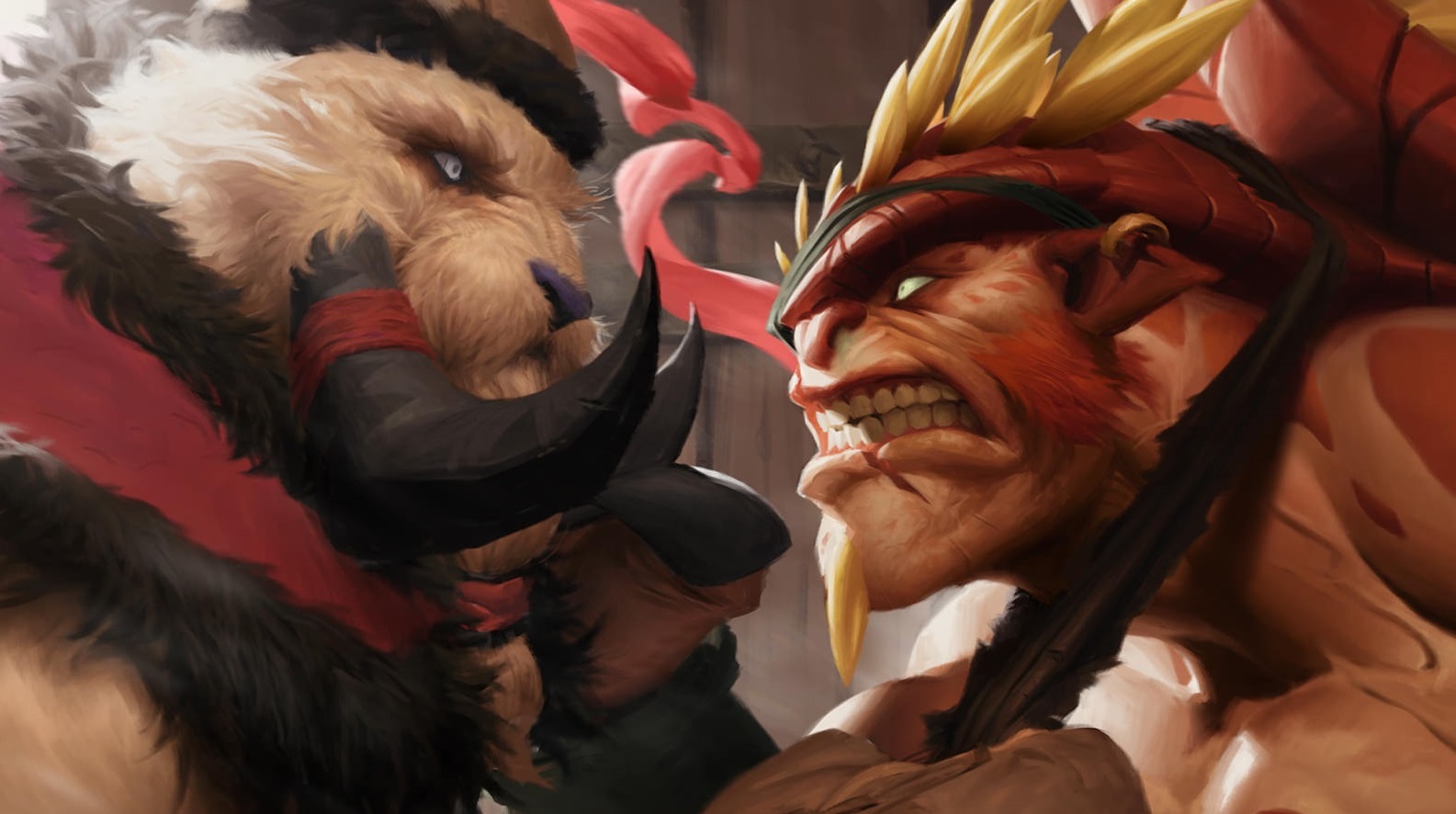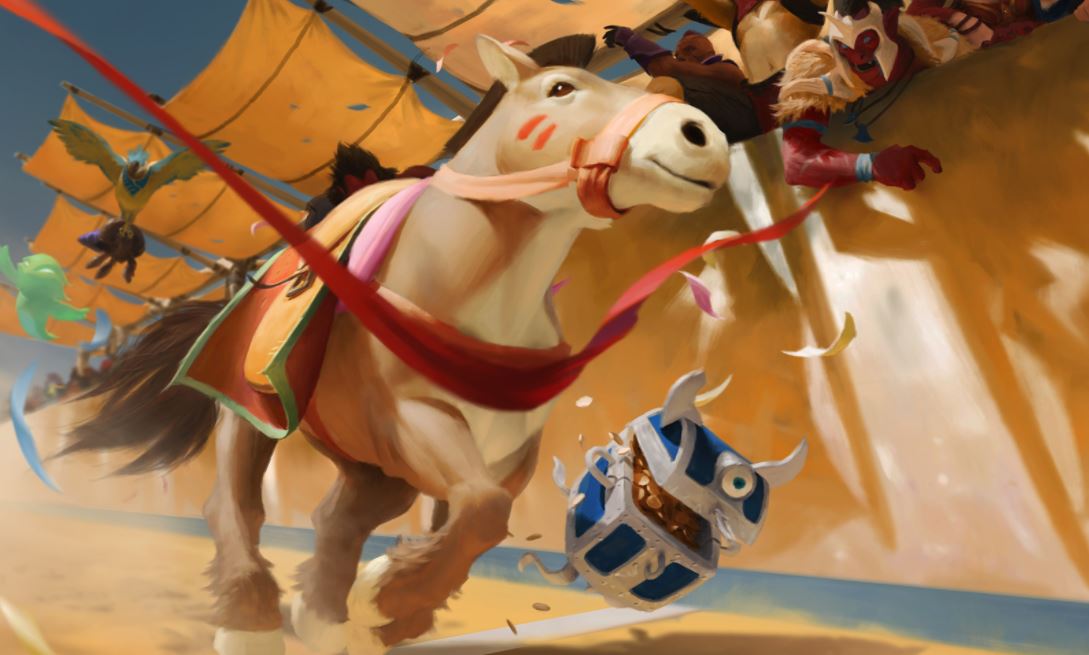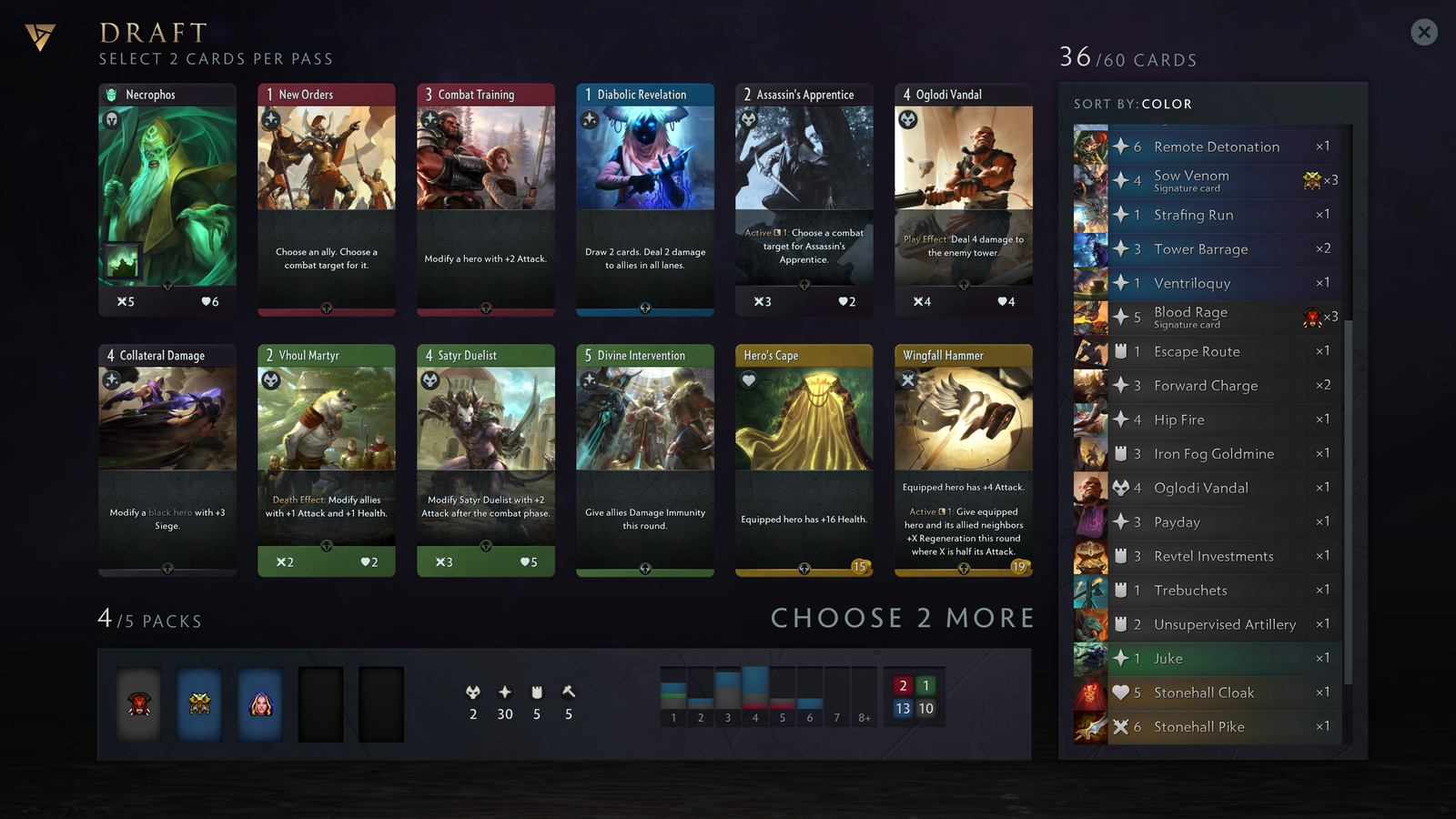Why did Artifact fail, and what can Valve do to save it?
It seemed to have all the ingredients for success, but the complex card game has hemorrhaged players since launch.

Surely if anyone ought to be able to cut through the noise on Steam and create the next smash hit, you'd expect it to be Valve. And yet, while Artifact may have sold as many as two million copies (the unlikely upper end of Steamdb's estimate), player numbers have fallen drastically since launch. There are consistently more people playing Portal 2.
It's not unusual for player numbers to fall significantly after launch, and continue to drop over time. That's just the way most videogames work. But Artifact's peak of over 60,000 concurrent players halved a day later and then halved again the day after that.
I was not optimistic about how commercially successful it would be, but I expected the game to be much more popular than this.
Andrey 'Reynad' Yanyuk
Now it's only getting daily peaks of between 940 to 1,384 players according to Steamcharts. The players leaving Artifact aren't just the ones who've vocally opposed its monetization. These are the people who bought in, who looked at the price and said 'I'm OK with that', yet still have not stuck with the game they shelled out for.
"The intangible 'fun' aspect is what the game is lacking right now," says Hearthstone pro Andrey 'Reynad' Yanyuk. That's a big problem. Is there a solution? We spoke to a number of card game experts, streamers and players about the current state of Artifact, and whether its future looks any brighter.
The fall
The precipitous drop has been surprising, even for those who didn't have high expectations for Artifact. Reynad, who's currently developing his own card game called The Bazaar, put out a video review of Artifact in November in which he praised its strengths, like the best-in-class visuals and the depth of its rules engine, while also highlighting flaws like its opacity, randomness, and lack of card synergy. At the heart of his criticism was that the combat between creatures was too much like a doing a complicated but ultimately dull equation, lacking the splashy effects and pizzazz of Hearthstone.
"It's hard to argue with the numbers," he says now. "Artifact has unfortunately tanked after release, and the player base is now one of the smallest among digital card games. I was not optimistic about how commercially successful it would be, but I expected the game to be much more popular than this."
In December Valve released the Build Your Legend update, which addressed some of the problems players had. It added a progression system, giving experience points for winning matchmade games and hitting achievements, and an XP bonus for scoring three wins in the same week. After enough level-ups players get free card packs, tickets, and icons. The update also added a measurement for skill rating.
Keep up to date with the most important stories and the best deals, as picked by the PC Gamer team.
"That was definitely a step in right direction, getting experience for various achievements after the game and getting rewarded with packs and avatars is awesome," says Stanislav 'StanCifka' Cifka, a pro Magic: The Gathering and Hearthstone player. "The whole ladder thing is still missing though, so I would say this update was more of a good starting point than the final version of what I would love to see."
The day of the Build Your Legend update saw a spike in the number of people watching Artifact on Twitch—over 20,000 viewers, the most it's had since early December—but the number of actual players did not rise. While those 20,000-plus people were watching it, less than 3,000 were playing.
Giana 'Bloody' Kaplan is a full-time Artifact streamer who has seen this disconnect between streamers and players. "Lately I’ve noticed a growing number of viewers who enjoy my stream, enjoy watching me play, but have never played a game of Artifact themselves and never plan to," she says. "That’s a huge issue."

This is just a very complex game which is determined to attract people who enjoy complexity.
Adrian 'Lifecoach' Koy
As for why many people would rather watch it than play it, Artifact's reputation for complexity isn't helped by how overwhelming it can look, especially with three lanes full of cards to keep track of. "I have no issues with the game’s barrier to entry," Bloody says. "However, more casual players get very intimidated by the visual and strategic complexity of the game. Not only does the game look complicated, but when you figure out what everything does, the strategy itself is deeper than any other card game out there."
Artifact's three-lane structure is a hindrance here. Players who stick with it eventually get used to holding two additional board states in their head, but they can always glance over at one of the other lanes when necessary. Viewers are at the mercy of someone else's camera, and it's easy to lose track of the state of play.
Adrian 'Lifecoach' Koy, a former pro poker player who has since gone from Hearthstone—which at the time he described as "like being punched in the face"— to Gwent to Artifact, agrees that Artifact's difficulty makes it more niche but ultimately sees that as a strength. "This is just a very complex game which is determined to attract people who enjoy complexity," he says. "It is not supposed to be a game to play whilst you check your social media on your phone or chat with a friend. There's plenty of good games like that already."
His partner, Mirijam 'Wifecoach' Koy, who also used to play Hearthstone before switching to Artifact, brings up Artifact's divisive randomness. "Personally I find the amount of RNG just right," she says, "but I understand the point that such a sophisticated and complex game should have less of it."
The future in the cards
Even with the reduced player numbers, it still doesn't take long to get into a match. That's bound to change if players continue leaving, which will eventually start to matter to the loyalists who remain as well as those who are just watching the charts so they can declare it a "dead game" in the comments.
But is it a problem for Valve? After all, despite the new threat posed by the Epic Store, the house that made Half-Life has still got got more money than god. If one of Valve's games turns out to be more niche than they expected, so what? "Valve is in a unique position among game developers," says Reynad, "because thanks to Steam they're in a financially sound position regardless of how their games do. That being said, I'm sure that this has been a sobering experience for them. You have to have your finger on the pulse of players these days. It feels like Valve was a little out of touch this time. Based on what I've heard from the info they've released, they made Artifact the game that they wanted to play. Unfortunately, it was not at all in-line with consumer trends."
Most of the people I spoke to brought up the fact that this isn't the first time a Valve game has had rough early days. "I mean they had a slow start with other games like Dota 2 before," says Lifecoach, "which then turned out to be very popular, so they seem to have the skill and mindset to keep working on their games improving them."

While some of the tweaks made to Dota 2—like the improvements to its UI, menus, and overall new player experience—have obvious parallels in changes Artifact needs, it also benefited from receiving balance patches every two weeks. That may not save a card game in need of something more drastic than just another rejig of the Axe card.
So what can Valve do to turn things around? Making it free-to-play is a popular suggestion in comment sections, but that would not only alienate the people who bought the game so far, it would also upset the balance, which relies on its economy to control card rarity. At least, in theory. The value of cards has dropped as departing players dump their decks, and at the time of writing a complete set is down to $61.85.
Reynad emphasizes the need for individual cards to be more exciting, to feel less like they're modifying an equation.
It'd require a huge redesign to bring Artifact in line with the way Hearthstone works, and "make your card game more like Hearthstone" is how you become another also-ran scraping by with 300 players. That said, there's space between Artifact's current pricing model and completely free-to-play worth exploring. Allowing players to earn cards during play that aren't marketable, for instance.
Wifecoach suggests a free trial version to make it easier for new players to test the waters, saying that, "other popular CCGs give you free access to the 'basic version' and then charge for packs etc. Even though it is a lot less costly to get a full collection in Artifact than Hearthstone or Magic, people cannot just try it out and see if they like it without investing money, which definitely is a barrier. "
According to Bloody, a lot depends on Artifact's success as an esport, and there is an upcoming tournament with a million-dollar prize pool on the way. "After all, most successful games today, especially card games, have plenty of developer-backed tournaments and circuits that engage with their player base," she says. "Once people have a reason to truly grind and improve at the game, the whole ecosystem can be revitalized. More streamers will engage with the game competitively, more players will want to practice and get better, and more spectators will be interested in the highest level of competition as a result of all the excitement."
Reynad emphasizes the need for individual cards to be more exciting, to feel less like they're modifying an equation. "Personally, I would start by reworking almost every improvement into a creature and adding extra removal to the game to compensate," he says. "The density of stat modifiers needs to be 1/10th of what it is now. They aren't satisfying cards to play. The intangible 'fun' aspect is what the game is lacking right now."

The other option would be to simply give up. Though unlikely, Valve could drift away from Artifact over time, updating it less and less frequently until it dies a quiet death. All the Artifact players I've spoken to believe Valve won't quit, however. And they think it's a game worth saving.

Designer Richard Garfield's games have lined up with consumer trends in the past, most famously with Magic: The Gathering. His name is also prominently attached to award-winning board games like King of Tokyo. Not everything he's worked on is a winner (Dilbert: Corporate Shuffle is remembered fondly by few), but if Artifact doesn't recover it will be a rare high-profile failure in his portfolio.
"There is a risk of articles like this devolving into senseless bashing of a struggling game," says Reynad. "I don't want to beat a dead horse, and think that it's important to point out some positives about the game. What Artifact did well, it did extremely well. Visually, it is the best looking digital card game period. Nothing else comes close. The skill ceiling is very high, though I'd say about as high as most card games. It conveys the feel and flavor of Dota better than any other card game could. The design space is also very broad for future expansions. I think that there is potential here, but it will take a paradigm shift from the dev team to salvage the game."
StanCifka agrees. "While the game at its core is still great and I love it, there is a whole infrastructure around it that needs to see a ton of work put into it."
"Well, the state of the game itself is amazing," says Wifecoach. "It is beautiful, relatively balanced, super fun and literally bug-free. Like the game or not—the quality of work here is outstanding."
Plenty of other games have started slow and turned things around thanks to sweeping updates, and it's always possible Artifact could manage the same. And according to Bloody, there has been one upside to its troubled start. "The streaming community, however small, is filled with passionate, wonderful people who you know are dedicated to the game," she says. "Ultimately, if and when Artifact does take off, I think this foundation of content creators will prove very healthy for the game’s community growth in the future."
Whatever happens, it needs to happen soon. Compare Artifact's Twitch numbers over the last three months to those of other card games, even ones that aren't at the Hearthstone level like Shadowverse, and the trend is clear. A typical day has well under 1,000 Artifact viewers across all of Twitch, while Shadowverse jumps over that line a few times a week.
Improvements are doubtless coming, but it'll take word-of-mouth to spread the news and invigorate the community, and that relies on a critical mass of players who still care enough to notice.

Jody's first computer was a Commodore 64, so he remembers having to use a code wheel to play Pool of Radiance. A former music journalist who interviewed everyone from Giorgio Moroder to Trent Reznor, Jody also co-hosted Australia's first radio show about videogames, Zed Games. He's written for Rock Paper Shotgun, The Big Issue, GamesRadar, Zam, Glixel, Five Out of Ten Magazine, and Playboy.com, whose cheques with the bunny logo made for fun conversations at the bank. Jody's first article for PC Gamer was about the audio of Alien Isolation, published in 2015, and since then he's written about why Silent Hill belongs on PC, why Recettear: An Item Shop's Tale is the best fantasy shopkeeper tycoon game, and how weird Lost Ark can get. Jody edited PC Gamer Indie from 2017 to 2018, and he eventually lived up to his promise to play every Warhammer videogame.

